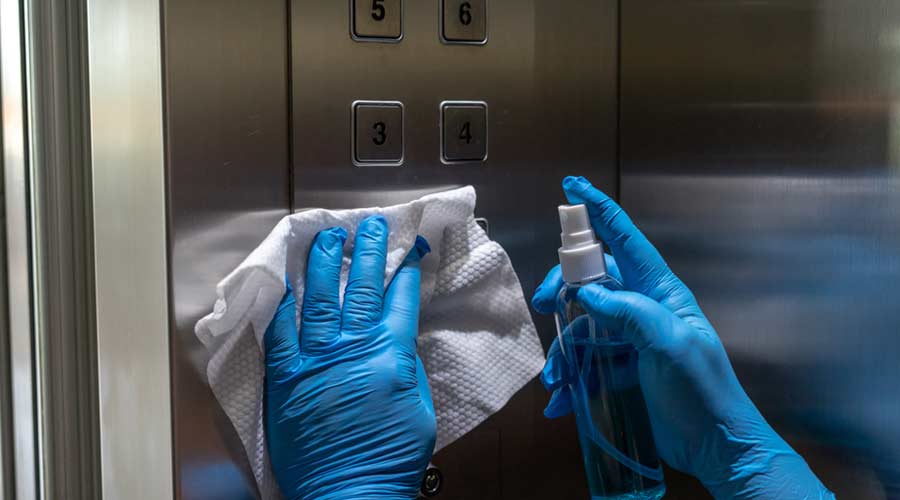
There are few formal style/type requirements when it comes to the actual dispensers, says Stein, explaining that the ADA doesn’t regulate them.
“The regulations come into play with the installation of the items,” she says. “A company can sell a dispenser saying it is ADA compliant, whether it is or not. The real test comes during the installation.”
Still, when making dispenser recommendations, distributors should keep a few things in mind. One thing that Stein mentions is the tendency to want to provide high-capacity toilet tissue dispensers, since these extend the time between refills. Although these make it easier for cleaning staff, they create hurdles when complying with the ADA.
Because of their size, these large dispensers must be mounted above the grab bar (placing under the bar would make it difficult to operate the dispenser with one hand, without users twisting their wrist in any way). And because ADA regulations require there be 12 inches of clearance above the grab bar to the dispenser, this puts the dispenser “entirely too far” out of reach, she says.
This illustrates a point Rathey makes — that it’s possible to “meet the letter of the ADA but still end up with dispensers that are difficult to use.” As such, being able to easily access the dispenser’s contents is what matters.
“The style of the dispenser is sometimes less critical than the way it enables access to paper — for example, when the end of the roll is hidden or concealed,” he says. “Even a single-roll dispenser can be effective if checked and maintained.”
The same can be said for dispensers outside the stall. For hand towels, Rathey recommends lever-operated or automatic/touchless dispensers. However, Stein has concerns around touchless dispensers for people with visual disabilities.
Identifying ADA compliance problems can prove difficult for those jan/san distributors not well-versed in the regulations. In some cases where dispenser installations are strictly mandated, exacting measurements are required to determine if the regulations have been met. But beyond this, the overall experience delivered by the restroom is equally important.
One of the easiest ways to uncover potential issues is by using the restroom and assigning it an ease-of-use metric. Asking those who rely on a wheelchair or other form of assistance to visit the restroom and then report back could also provide helpful insights.
Distributors can help their clients avoid problems by offering educational and training materials on ADA requirements, says Rathey. Conducting compliance audits to confirm the dispensers meet the letter and the spirit of the law is another tactic he recommends, saying that in some facilities, this area “definitely needs attention and additional discussion.”
Moody suggests that distributors visit their customers; touring the facility and demonstrating how their expertise offers more value than that of online vendors. And although restrooms should comprise a significant part of this tour, ideally the distributor’s overall objective would be that of helping the customer make improvements to facility operations as a whole.
“It’s important to be there as a resource for your customer in the many areas of compliance, whether it’s related to safety — as with OSHA — or in compliance with this portion of the ADA,” Moody explains. “The jan/san distributors that make things easier for the customer will strengthen their relationships in the ever-changing world of commerce and distribution.”
Pamela Mills-Senn is a freelance writer from Long Beach, California. She is a frequent contributor to Sanitary Maintenance.
Distributors Can Aid Facilities on ADA Requirements

 The Down and Dirty on Cleaning in Virus Season
The Down and Dirty on Cleaning in Virus Season How Surfactant Use is Expanding in Commercial Cleaning
How Surfactant Use is Expanding in Commercial Cleaning